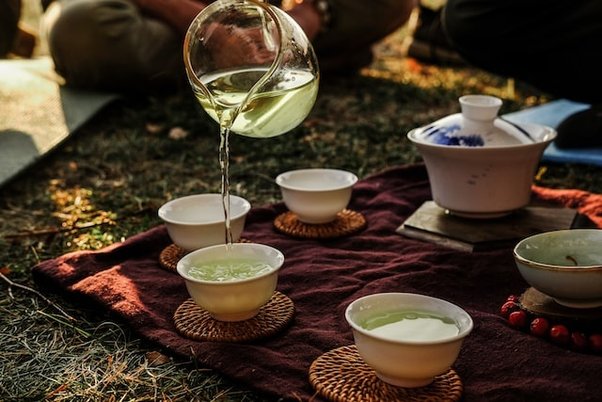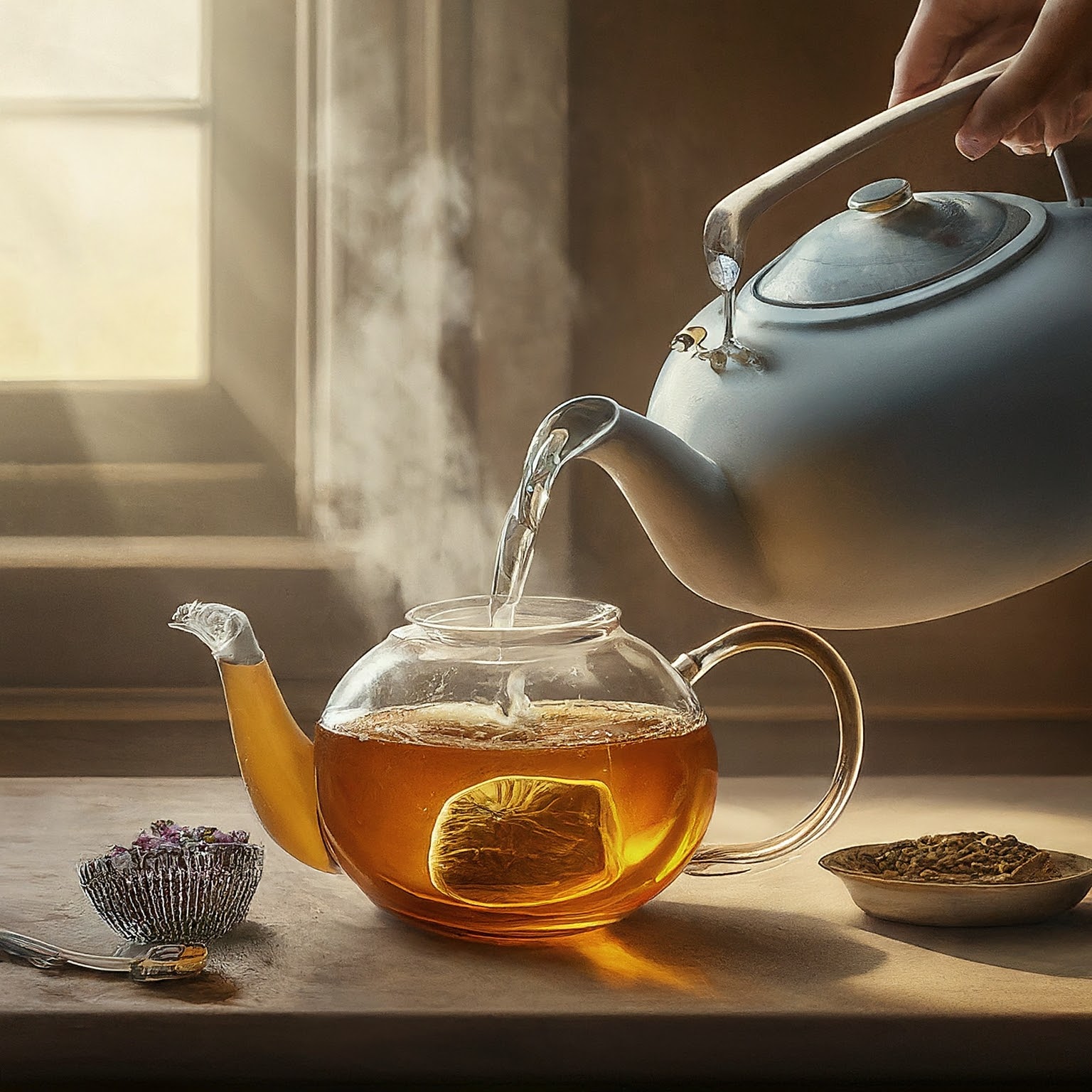Steeping secrets involve factors like water temperature, steeping time, and tea-to-water ratio, where adjusting these variables unlocks the full spectrum of flavors and benefits inherent in the tea leaves, ensuring a perfect infusion every time.
Unlocking the Flavor: The Ultimate Guide to Steeping Tea
Steeping tea is a fundamental process in the preparation of a perfect cup of tea. It involves extracting the flavors, aromas, and health benefits from tea leaves by allowing them to infuse in hot water. Steeping tea is not just about brewing a beverage; it is an art that requires precision and attention to detail. The way tea is steeped can greatly impact its taste, strength, and overall experience.
In this article, we will explore the importance of steeping tea, the factors that affect the steeping process, different types of tea and their steeping times, water temperature for steeping tea, various steeping methods, choosing the right equipment, tips for perfect tea steeping, how to store steeped tea, and the health benefits of steeping tea.
What is Steeping Tea?
Steeping tea refers to the process of immersing tea leaves in hot water to extract their flavors, aromas, and other desirable qualities. It is a method that allows the water to interact with the tea leaves and release their essence into the liquid.
Steeping is different from brewing because brewing typically involves a more vigorous process that may include boiling or simmering the tea leaves. Steeping, on the other hand, is a gentler method that allows for a more delicate extraction of flavors.
Why is Steeping Tea Important?
Steeping tea is important for several reasons. Firstly, it allows for the extraction of flavors and aromas from the tea leaves. The longer the steeping time, the stronger the flavor will be. Secondly, steeping releases the health benefits present in tea leaves.
Different types of teas have various health benefits, such as antioxidants and compounds that promote digestion or reduce stress. Lastly, steeping allows you to achieve your desired strength of tea. Whether you prefer a light and subtle cup or a bold and robust one, steeping gives you control over the strength of your tea.
Factors Affecting Tea Steeping
Several factors can affect the steeping process and the resulting cup of tea. The type of tea you are steeping plays a significant role. Black teas, green teas, white teas, oolong teas, and herbal teas all have different steeping requirements.
Additionally, the quality of the tea leaves can impact the flavor and strength of the tea. Higher-quality tea leaves often require shorter steeping times to avoid bitterness. The quality of the water used for steeping is also important. Water that is too hard or contains impurities can affect the taste of the tea.
Steeping time and water temperature are crucial factors as well. Steeping for too long or using water that is too hot can result in a bitter or astringent cup of tea.
Types of Tea and Their Steeping Time
Different types of tea require different steeping times to achieve their optimal flavor profiles. Here are some general guidelines for steeping times:
1. Black Tea: Black tea is typically steeped for 3-5 minutes. This allows for a robust and full-bodied cup of tea.
2. Green Tea: Green tea is more delicate and should be steeped for 2-3 minutes to avoid bitterness.
3. White Tea: White tea is even more delicate than green tea and should be steeped for 1-2 minutes to preserve its subtle flavors.
4. Oolong Tea: Oolong tea falls between black and green teas in terms of flavor and strength. It is usually steeped for 3-4 minutes.
5. Herbal Tea: Herbal teas are made from various herbs, flowers, and fruits, and their steeping times can vary greatly depending on the ingredients used. It is best to follow the instructions provided with each herbal tea blend.
Water Temperature for Steeping Tea
The water temperature used for steeping tea is crucial in achieving the desired flavors and avoiding bitterness. Here are the ideal water temperatures for each type of tea:
1. Black Tea: Black tea is best steeped in water that has been brought to a full boil, around 212°F (100°C).
2. Green Tea: Green tea requires a lower water temperature to avoid bitterness. The water should be heated to around 175-185°F (80-85°C).
3. White Tea: White tea is the most delicate and should be steeped in water that is around 160-175°F (70-80°C).
4. Oolong Tea: Oolong tea can be steeped in water that is around 185-205°F (85-95°C), depending on the specific type of oolong.
5. Herbal Tea: Herbal teas can be steeped in boiling water, similar to black tea.
Tea Steeping Methods
There are various methods for steeping tea, each with its own unique characteristics and benefits. Here are a few popular methods:
1. Traditional Steeping: This method involves using a teapot or an infuser to steep the tea leaves in hot water for the recommended time. It allows for full extraction of flavors and aromas.
2. Cold Brewing: Cold brewing involves steeping tea leaves in cold or room temperature water for an extended period, usually overnight. This method results in a smoother and less bitter cup of tea.
3. Sun Tea: Sun tea is made by placing tea bags or loose tea leaves in a container filled with cold water and allowing it to steep in direct sunlight for several hours. This method produces a milder and more refreshing cup of tea.
4. Microwave Steeping: In this method, tea leaves are placed in a microwave-safe container with hot water and microwaved for a short period. It is a quick and convenient way to steep tea, but it may not result in the same depth of flavor as traditional steeping.
How to Choose the Right Tea Steeping Equipment
Choosing the right equipment for steeping tea can greatly enhance your tea-drinking experience. Here are some essential tools:
1. Teapot: A teapot is a classic and versatile tool for steeping tea. It allows for easy pouring and can be used with various types of tea.
2. Infuser: An infuser is a small mesh or perforated container that holds the tea leaves while allowing water to flow through. It is ideal for loose leaf teas.
3. Strainer: A strainer is used to separate the tea leaves from the liquid when pouring from a teapot or infuser. It ensures a smooth and sediment-free cup of tea.
4. Tea Kettle: A tea kettle is used to heat water to the desired temperature for steeping tea. Electric kettles with temperature control settings are especially convenient for precise water temperature control.
Tips for Perfect Tea Steeping
To achieve a perfect cup of tea, here are some tips to keep in mind:
1. Use fresh water: Always use fresh, cold water when steeping tea. Water that has been previously boiled may have lost oxygen and affect the taste of the tea.
2. Measure tea accurately: Use the recommended amount of tea leaves or tea bags for the desired strength. Too much or too little tea can result in an imbalanced flavor.
3. Don’t oversteep: Follow the recommended steeping times to avoid bitterness or astringency. Oversteeping can extract unwanted compounds from the tea leaves.
4. Experiment with different steeping methods: Don’t be afraid to try different methods and techniques to find your preferred way of steeping tea. Each method can produce unique flavors and experiences.
How to Store Steeped Tea
If you have leftover steeped tea, there are a few ways to store it to maintain its freshness:
1. Refrigeration: If you plan to consume the tea within a day or two, you can refrigerate it in a sealed container. This will help preserve its flavors and prevent spoilage.
2. Freezing: Steeped tea can be frozen in ice cube trays and used later as a refreshing addition to iced tea or other beverages.
3. Room temperature storage: If you prefer to store steeped tea at room temperature, make sure to keep it in an airtight container away from direct sunlight or strong odors.
Health Benefits of Steeping Tea
Steeping tea not only provides a delightful beverage but also offers numerous health benefits. Some of the key benefits include:
1. Antioxidants: Tea is rich in antioxidants, which help protect the body against free radicals and oxidative stress.
2. Reduced risk of chronic diseases: Regular consumption of tea has been linked to a reduced risk of heart disease, certain types of cancer, and other chronic conditions.
3. Improved digestion: Certain types of tea, such as herbal teas like peppermint or ginger, can aid digestion and soothe the stomach.
4. Reduced stress: The act of steeping and enjoying a cup of tea can have a calming effect on the mind and body, reducing stress and promoting relaxation.
Steep Your Way to a Perfect Cup of Tea
In conclusion, steeping tea is an essential process that allows for the extraction of flavors, aromas, and health benefits from tea leaves. It is important to consider factors such as the type of tea, water quality, steeping time, and water temperature to achieve the desired cup of tea.
Experimenting with different types of tea, steeping methods, and equipment can enhance your tea-drinking experience. So go ahead and steep your way to a perfect cup of tea, and enjoy the multitude of flavors and benefits that tea has to offer.
Originally posted 2024-04-15 04:10:23.





